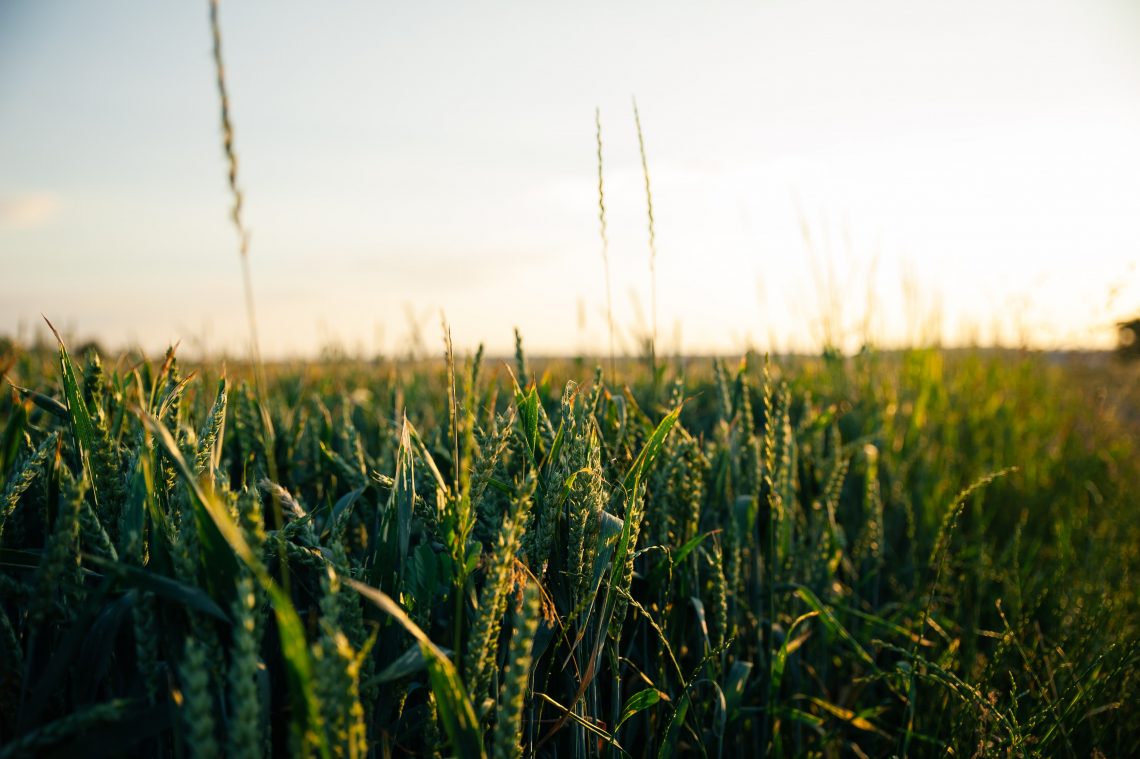
Every Drop Counts: How a Village in Maharashtra Transformed Parched Land to Lush Fields
A teacher and guide from Maharashtra’s Purushwadi village shares how
the collective efforts of village residents and experts helped contain the water crisis in the village
Story by: Mahadu Chindhu Kondar
Read the original story in Marathi
Before the year 2000, the village of Purushwadi faced an acute shortage of water. The primary occupation of people in this small tribal village in the Sahyadri hills on the banks of Kurkundi River, is agriculture. Some people raise animals as a side occupation. Kurkundi River is the lifeline that supports Purushwadi’s water requirements for drinking and farming purposes.

In those days, there was no dam on Kurkundi River. The village folk would form groups of 10-12 people, and dig a water tank amid the sand and stones of Kurkundi River. Women and children walked uphill to that water tank, pots and pans on their heads, twice or thrice a day to fetch water, then descended back to the village. When a tanker brought water to the public tank 1-2 times a month, women and children rushed towards it. All of this was tough on the womenfolk, and my own family was no exception.
During winter and summer, the crops were cold and dry, and it felt as if they, too, were staring expectantly at the sky. In summer, the farmland was never green and verdant. The seeds and the finger-high seedlings sown in fields during monsoon, too, were later destroyed by the sun.

It took hours to take the animals to the river to drink water. Cowherds walked barefoot, and the scorched ground at the peak of summer often left their feet bloodied. These were very difficult and challenging times for everyone.
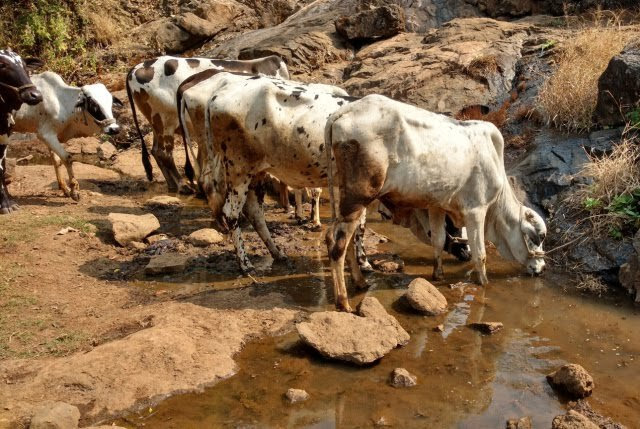
One day, a young village boy named Atmaram went to the river to catch crabs. Along the banks of Kurkundi River (near the Jitwana area), he spotted a crab resting by a hole through which a live fountain of water flowed. Each time Atmaram tried to catch the crab, it kept ducking into the hole. When he started to dismantle the crab settlement with an iron spear, more water began flowing through the hole. Atmaram finally broke through the settlement and caught the crab, but the water kept flowing out of the hole. The young man was surprised. He came home in the evening and shared the story of this mysterious living spring with his friends. Next day they went to the same spot and built a water reservoir. The village was able to consume the clean, pure and sweet water of the reservoir for an extended period of time.
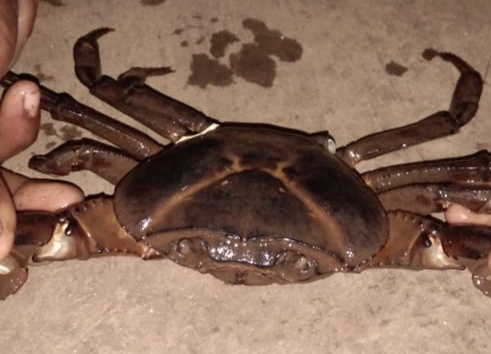
Crab caught from Kurkundi River 
Water holes on the banks of Kurkundi River
With help from the Gram Panchayat, the village got approval to construct a well and a pipeline to solve the water problem. But where exactly should the well be dug? Where is the water? Would there be sufficient water for the entire year? The village folk discussed these questions at the village meeting, and there were varying opinions. Based on his own experience, Atmaram stated, “’Dig a well in Jitwana.” Everyone agreed, and a water tank was built in the village, and a pipeline was laid that exists till date. This solved the drinking water problem but the question of obtaining water for agriculture, livestock, and wild animals was still open.
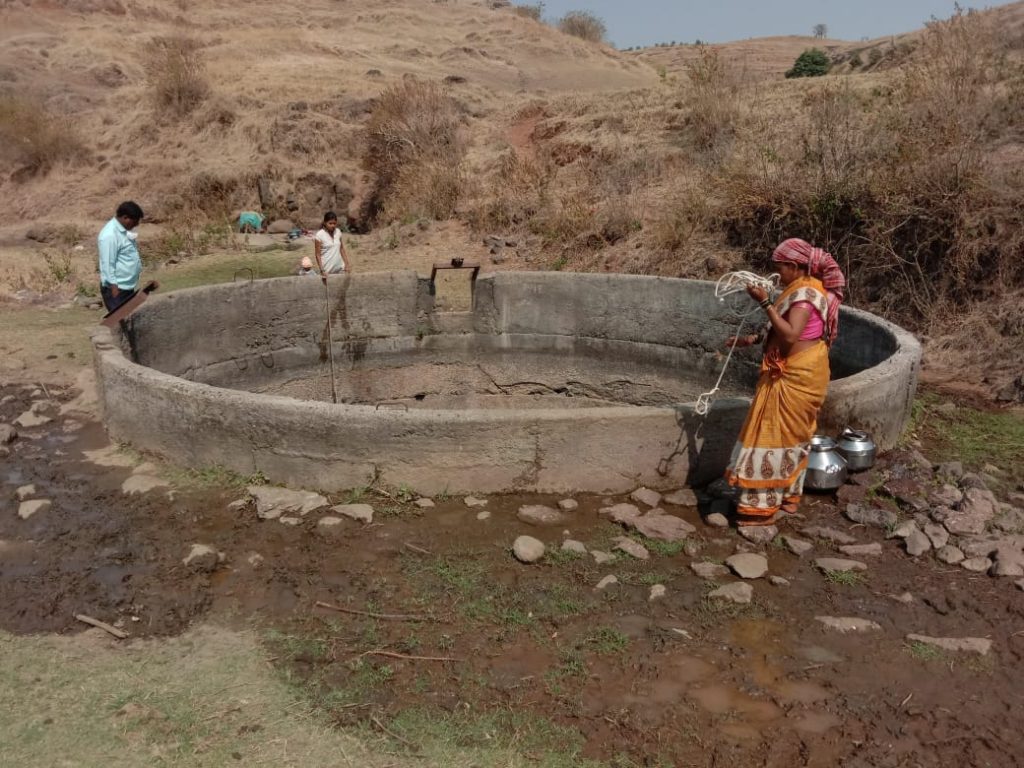
Around 2005, at a Gram Sabha, the village passed a resolution to request the non-profit organization Watershed Organization Trust (WOTR) to implement a watershed development program in the village. In 2006, the organization initiated the Indo German Watershed Development Program in Purushwadi on the condition that on some projects, public participation and labour would be required. My friends were employed as watershed workers for five years on this program.
As part of the project, various soil and water conservation works were implemented over a total of 374 hectares in the region. Examples include Continuous Contour Trenches (CCT), Watershed Trenches (WAT), Loose Boulder Structure, Gabion Structure, Farm Bund, Repair of Farm Bund (RFB), Drainage Bunding, Dam Closure and Cement Dams. By planting trees around agricultural barriers and forest floors, both grazing and tree felling were eliminated.
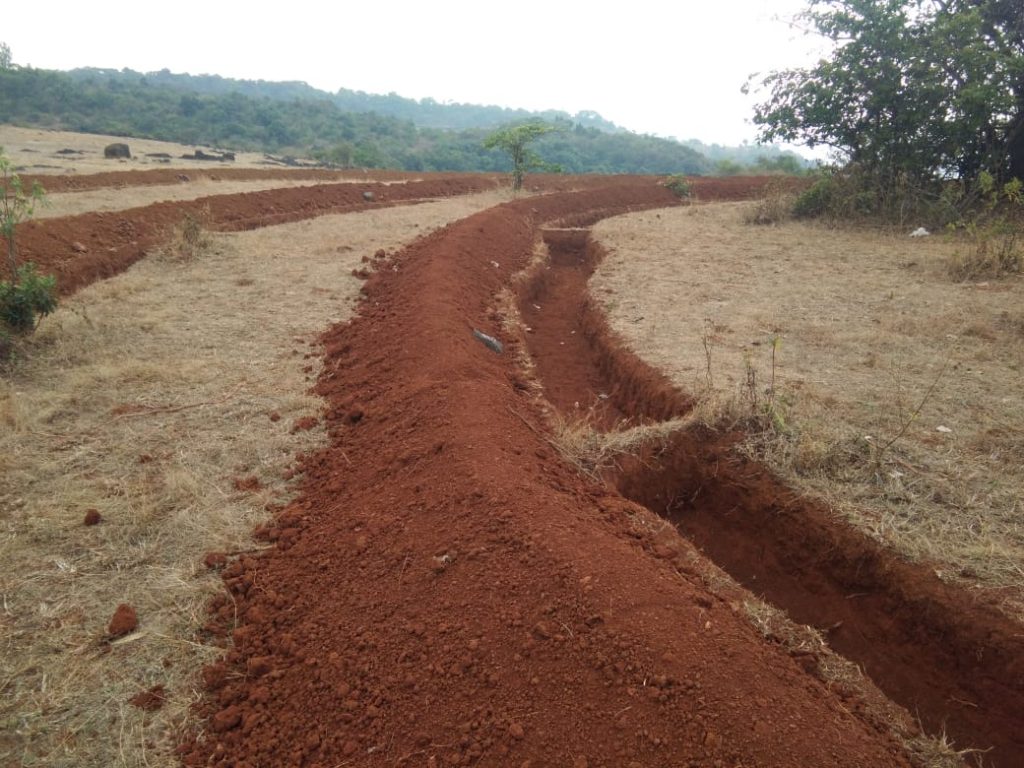

Farmers banded together to bring water for agriculture through the pipeline. As a result of these untiring efforts, fields in the Purushwadi area started to look silken green even in peak summer. Soil erosion was reduced, and water seeped into the ground, causing water level in the wells to rise. Crop loss was avoided as there was sufficient moisture in the farmland.
Not only did the project increase water availability, it also helped increase employment and reduce migration. Instead of having to migrate elsewhere for work, village folk, including my family members, could work on soil and water conservation projects right here in the village. I was able to use earnings from this project to continue my education and raise a family.
After the Indo-German watershed project was completed, WOTR launched the Eco-Tourism Project aiming to permanently solve the problem of women and youth unemployment. This project continues to be run by the organization Grassroutes. In this project, youth are employed as guides or housekeepers. Women are able to earn money by providing cooking services. We have learned a lot from this particular project. For instance, we learned about ethics; we were taught to speak in Hindi; we even began to understand and speak a little English. We became accustomed to cleanliness and hygiene. We got the opportunity to preserve and share our rural culture.
In 2009, with the financial backing of NABARD bank, WOTR started the Climate Change Adaptation Program (CCA) in a total of nine villages, including Purushwadi, Shiswad, and Khadki. The Bhairavnath Village Development Committee was set up to monitor and manage CCA activities in Purushwadi. The project included a total of 14 components including water management, biodiversity protection and conservation, disaster management, and women and child development.
At that time, I was completing my D.Ed. education and working as a part-time teacher at Government Middle Ashram School, Shirpunje. I was paid Rs. 90 daily, and I had to travel 24 km back and forth through the forest each day on foot. Despite being educated, I had been unable to get a regular job, and I thought that I’d rather spread knowledge (as a teacher) than stay home.
A year passed. I was struggling a lot for such a low salary, and there was no sign of becoming permanent—I was bored. As I contemplated searching for another job, Devram Kondar, a fellow villager working as Project In-charge at CCA, told me about the project and offered me the opportunity to work with him at the village level. Unsure of my ability to manage the work, I was reluctant. My situation could be described as “the oil is gone, and so is the ghee,” (तेल ही गेलं, नी तुप ही गेलं तर…’) and “if I hold it, it bites, and if I release it, it flees.” (‘धरलं तर चावतंय, सोडलं तर पळतंय.’) I eventually decided to work on CCA, hoping to learn something new and gain experience. That’s how I got connected to the CCA project as a ‘Vasundhara Sevak’ in my own village.
The Indo-German Watershed Development Program taught people to block and collect water. The CCA project aimed to educate people on the importance and value of water, planning for water allocation for agriculture, livestock, industry, animals and birds, and the use of water in a balanced and economical manner. Working on this project, I received training on water management, biodiversity conservation, and disaster management, and I was able to use this knowledge in the development work of my village. As part of CCA, ponds were dug out of bedrock and handed to farmers for water conservation. They are still being used today for agriculture and livestock.
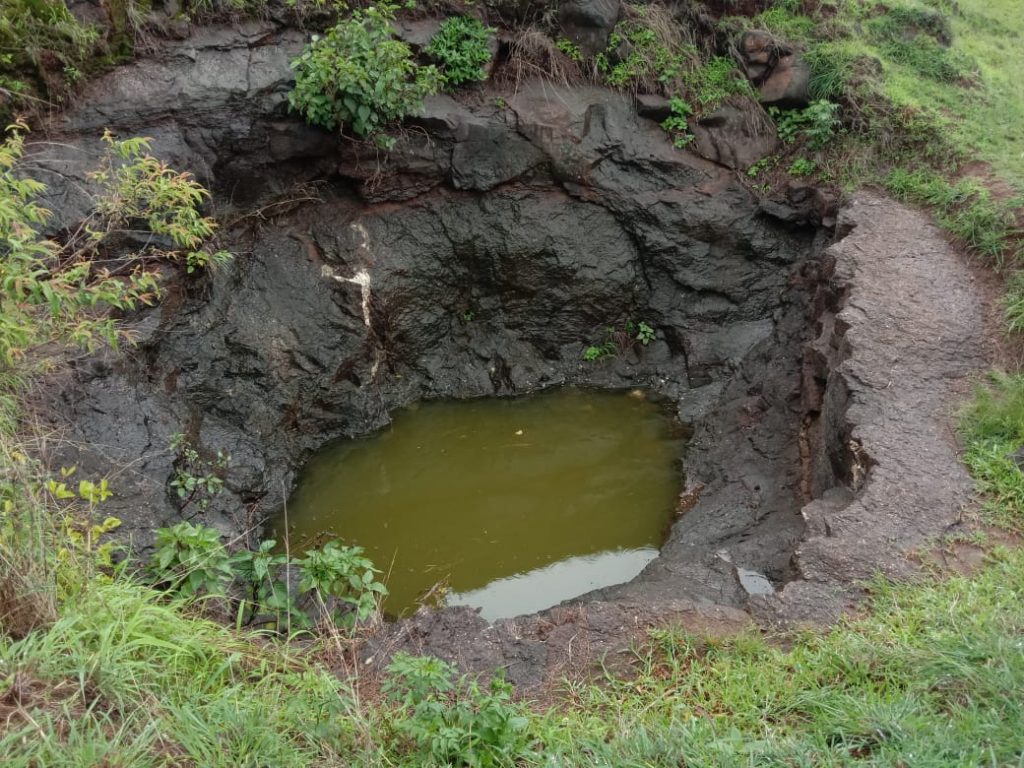
In village and ward meetings, village development and joint women’s committee meetings, I emphasized the importance of water and water conservation. I encouraged the village residents to use water only as needed. Even today in our village, there are no stoppers on the taps, causing millions of litres of water to be wasted.
I suggested implementing various methods for saving water, such as:
- Install stoppers on the taps.
- Stop excessive use of drinking water for washing animals and vehicles.
- Stop the daily practice of throwing away stagnant water from the house.
- Stop overflow of tank water.
- Solve water leakage issues.
- Reduce the time of release of drinking water in the village.
- Install a water meter in everyone’s tap connection.
- Recycle and reuse water.
- Implement the “one person one tree” scheme (A big tree has the capacity to store about two lakh litres of water).
- Use drip and sprinkler irrigation systems for agriculture.
- Stop irrigating with water containers.
- Change the timing of irrigating crops and resolve to grow crops that require less water.
- Stop the practice of giving away water without proper permission as a way to earn extra money.
As I repeatedly drilled the importance of water into the minds of people, they began implementing the various methods I mentioned. Sewage was recycled for the trees in the backyard, and that practice is still prevalent today.
Under the CCA project, Biodiversity Register (PBR, or People’s Biodiversity Register) was created through public participation under the aegis of Vasundhara Biodiversity Management Committee to record and conserve biodiversity in Purushwadi village area.

People’s Biodiversity Register. Photo: Grassroutes 
Farm Crop in Purushwadi. Photo: Grassroutes 
Medicinal Plants in Purushwadi. Photo: Grassroutes 
Seed Collection. Photo: Grassroutes
As this project got underway as a means to preserve and conserve wild biodiversity, and make water available for wildlife, we saw that the naturally occurring rock pools on the hilltops around the village had been dammed up by earth for years. We dug them up and revived them by allowing rain water to collect in them, so wildlife could use them as drinking water pools. We have done more innovative work of this kind than any other village on the project.

Living Nature is the true basis of human existence, and in order to create a sense of oneness, affinity, love and compassion in the minds of people regarding Nature, we organised a Biodiversity festival in Purushwadi in 2015 to guide other villages in Maharashtra.
Through the medium of this story, I hope you have realized the importance of water and resolved to use it only as needed so it can be conserved for the sake of future generations. If you are able to view all living nature through the lens of a responsible citizen, then I believe that this story would have been a source of direction, inspiration and guidance.
*Cover photo: Glen Carstens-Peters on Unsplash
Read the original story in Marathi
Meet the storyteller



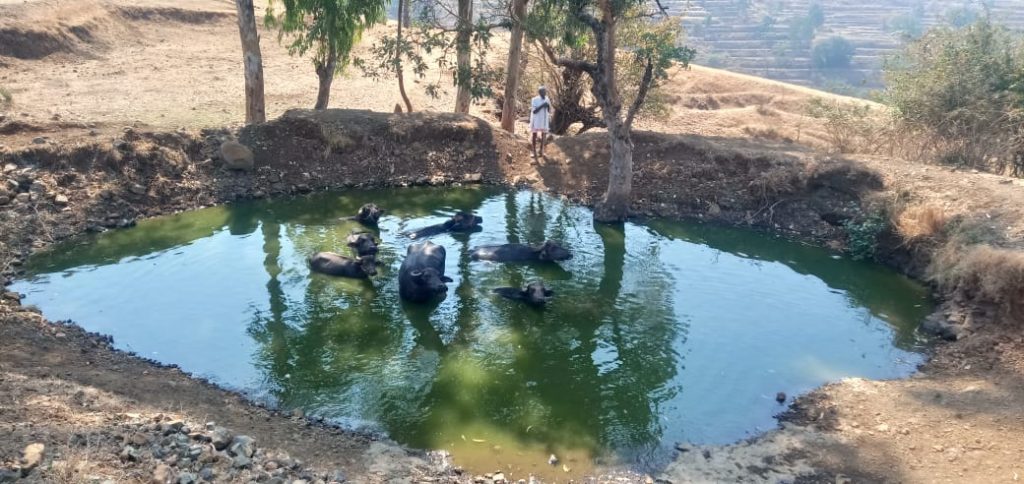









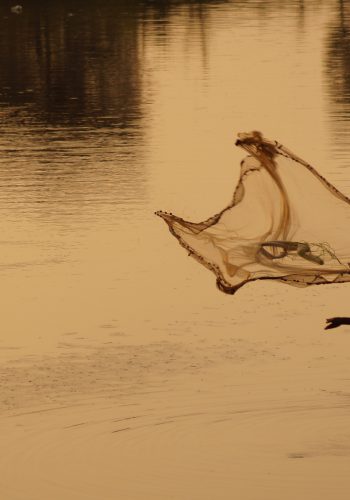


बहुत शानदार! लेखन के लिए बधाई. चित्र भी गजब के हैं. निश्चय ही बहुत मेहनत लगी है पोस्ट में और उसके अनुवाद में भी.
Love your work…keep going